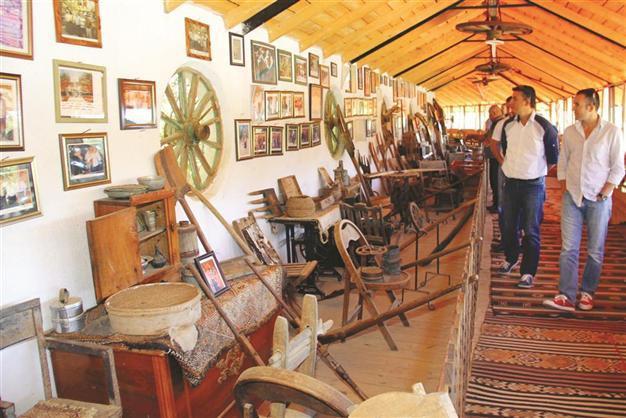Museum of nomads finds a home in Turkey's Fethiye
FETHİYE - Anadolu Agency

The nomad museum contains many ancient tools and aims to reflect nomadic Turkish culture, as well as how the community lived in the past. AA photo
Honoring the pastoralist communities who constitute an important part of the societal makeup of southern Turkey, a tourism manager in Fethiye has opened the country’s first nomad museum with 2,500 artifacts.“We should not forget the past, and I hope [the nomadic life] will live on here in my museum,” said Enver Yalçın, who recently opened the museum focusing on the life of the Yörük people in the southwestern district’s Kargı village.
While Yörük nomadism has necessarily faced pressures from the modern world, their communities are still found in southwestern Turkey around Antalya and in the Taurus Mountains further east.
Yalçın collected many ancient agriculture tools from different parts of Turkey such as Muğla, İzmir, Antalya, Isparta, Burdur and Kütahya. At first he exhibited the objects in the garden of a restaurant he operates before deciding to construct two buildings near his eatery to function as a museum.
The museum contains many ancient tools and aims to reflect nomadic Turkish culture, as well as how the community lived in the past.
Yalçın said he started collecting artifacts during his childhood, taking after his forefathers.
Ancient Anatolian tools
After visiting Mustafa Kemal Atatürk’s mausoleum and the War of Independence museum in Ankara, Yalçın said he decided to also construct his own museum.
“For 15 years, I collected a total of 2,500 items. In my collection it is possible to see many ancient Anatolian tools. The items also make people realize how Anatolian people lived before technology entered their lives,” he said.
Noting that it is almost impossible to find a museum that is free in Turkey, he said: “I wanted people to not have to pay if they want to visit my museum and see my collection. That’s why I chose to make it free. On the other hand, it is very important to learn how our ancestors live here in the past.”
Yalçın said it was especially important to learn about the area’s nomadic past given how pervasive technology has become.
Noting that it pleased him for people to see the collection and become more aware of the past, Yalçın said: “If I can make the past come alive, this will be my biggest happiness.”
Yalçın said the number of visitors to the museum was continuing to rise, adding that his goal was to attract a total of 100,000 visitors.
Half of the visitors are foreign tourists, he said, adding that tourists consistently visited the museum when they come to Fethiye.
The museum sometimes host student and school groups for daily visits, he added.
















